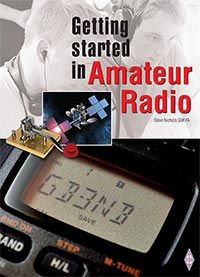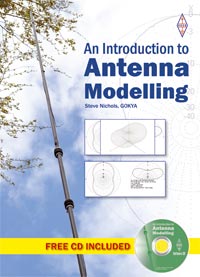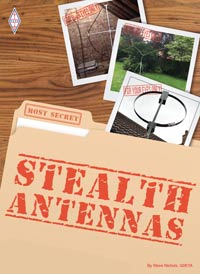Monday, 9 June 2025
Radials and Counterpoises
This is a talk I gave to Norfolk Amateur Radio Club at its annual Radioactive event. It looks at radials for ground-mounted verticals, including how many do you need and how long should they be. It references the excellent work done by Rudy Severns N6LF. Download the presentations in PDF format (760k).
Friday, 21 March 2025
HF Propagation - what do the numbers mean?
This was the title of a talk and presentation I gave to the Nuneaton ARC in March 2025.
I have attached a PDF of the PowerPoint presentation, which can be downloaded here.
Without the talk, it may not make total sense, but it at least gives you a flavour of the talk and some insight into what some of the terms mean in HF propagation.
Wednesday, 21 February 2024
New worldwide 10m beacon list issued
RSGB’s Propagation Studies Committee (PSC) has released a new HF beacon list, with the 10m listings completely revamped.
The old list, which was started by Martin Harrison G3USF (SK), had been added to over the years, but was getting out of date. The only way to make it more accurate was to start again.
Use was made of the Reverse Beacon Network (RBN), which wasn’t available when the list was originally created, plus listeners’ contributions from around the world.
I started by removing around 60 beacons that had not been heard for some time. Delving deeper it seems that a lot had been taken off the air, the owners had died, or their frequencies had changed.
Using the RBN gave a pretty good indication of what beacons are actually on air, plus help from a list compiled by Gary ZL2IFB filled in some of the gaps.
Beacons that are temporarily off-air have been left in, but marked in black.
While no list will ever be complete as changes take place around the world, I think the list is now far more useable. I’ll endeavour to make changes as and when they are needed.
The new beacon list can be found at:
https://rsgb.org/main/technical/propagation/propagation-beacons/
Sunday, 7 January 2024
Help needed with Index Laboratories' QRP+ radio
After a big desoldering struggle I fitted the new SBL-1 (U5), which brought the receiver back to life. Unfortunately, the TX still didn't work. Back to the drawing board.
Saturday, 6 January 2024
Update to UK propagation charts
I'll freely admit that my UK propagation charts had been a bit neglected over the past year. But not any more!
I've now updated them until the end of 2024 with new predicted smoothed sunspot numbers.
I've also fixed a problem with the Kp graphs. They now appear, along with solar X-ray and proton flux graphs. This was because the US Space Weather Prediction Center had stopped the production of the previous Kp chart.
I still recommend both Proppy and VOACAP.com if you want detailed HF forecasts, or if you want to do long-path predictions. But for casual use my charts are fine, and produced using VOACAP.
Leave a comment if you find them useful (or not!).
Incidentally, the SSN charts I used show that the expected solar maximum is the middle of this year.
Saturday, 15 April 2023
Preparing the GB2RS propagation report
Attached below is a PDF (14Mb) of the presentation I gave on 15th April 2023 after the RSGB AGM.
It looks at how we prepare the weekly propagation report for the RSGB's GB2RS news report. It contains a lot of useful URLs to sources, data and programs that people might find useful.
Steve G0KYA
Thursday, 30 March 2023
Ten metres (28MHz) beacon list updated
I've just spent two days updating the RSGB's 28MHz beacon list. I used the reverse beacon network and logged/updated the beacon list accordingly. This takes a lot of time as many of the "spots" are misread and have to be checked individually.
Beacons heard over the last three years are highlighted in red. I'm now happy that it is pretty up-to-date. The RBN has a beacon listing, but it is way out of date - GB3RAL is still listed and that hasn't been on for years.
I think this is the best way as it reflects beacons that are actually transmitting and not just listed. The full beacon list can be found on the propagation section of the RSGB website here: http://rsgb.org/main/files/2023/03/G3USFs-Worldwide-List-of-HF-Beacons.pdf
The actual changes are:
Change of freq/details:
28270.5 PY4MAB Pocos de CaldasGG68 2W
28193.1 LU2DT Mar del Plata GF12 5W
28208 WD5GLO Minco OK EM15ah 3W
28281 AG8Y Middletown OH EM79TL 7.5W
28273.8 WI4L Dalton GA EM74MS
28243 AA1SU VT FN34KL 5W
28209.5 N2UHC St Paul KS EM27JM 4W
28203.3 WB9OTX EN55 5W
28280.4 KE4IFI Lexington SC EM9JV 7W
Additions:
28297.9 K4JDR Raleigh, NC FM05 10W
28255.8 WB4NCT Athens, AL EM64 5W
28241.3 WW2BSA Warren, NJ FN20OU 7W
28260.8 IQ8BB Salerno JN70JQ
28178 IQ0GV Sora JN61TR 5W
28236.3 F1ZTS Rochefort in97QI 10W
28266.1 VK4RST St George QLD QG41HW 10W
28285.9 AJ4YN Chesapeake, VA FM16UO ? ?
28215 GB3MCB Cornwall, UK IO70OJ ?
28252.6 WD8INF Lebanon OH EM79VK 10W
28258.8 AC5JM Bartlesville OKEM16FT ?
28209 N5TIT Westminster, COEM12PX 10W
28206.5 N4SO Grand Bay, AL EM50tk 6W
28296.2 VE3IIM Hanover, ON EN94LD 4W
28321.4 IZ1KXQ La Spezia JN44WC 0.1W
28230.8 NG7I Ritzville WA DN07TC 5W
28202 WB7EUX Joseph, OR DN15JI 10W
28233.5 K7RA Seattle, WA CN87UQ 11W
28260 KC4QLP Little Falls NYFN23OB 10W
28245.3 K0WKT Black Dia. WA EN36WT 5W
28226 K6KWS Redwood City CA CM87VL 10W
28240.1 W8EDU Cleveland, OH EN91EM 10W
28206.9 N4XRO Burbank CA DM04UE 5W
28276 XE1JAL Xalapa EK19MM 5W
28230.3 W2MQO Grand Island FLEL98dv 10W
73 de Steve G0KYA
Chairman, RSGB Propagation Studies Committee


















